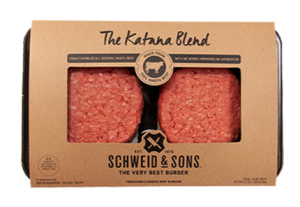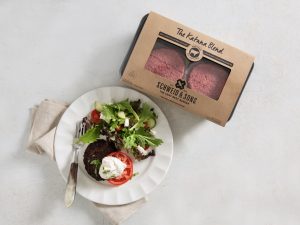What Is Wagyu Beef? A Complete Guide
Wagyu is one of the most famous and expensive types of beef in the world, but plenty of eaters still don’t understand exactly what it is. Though it may be tempting to classify it by its superior tenderness and fattiness — the result of its distinct marbling — true wagyu is actually determined by a combination of genetics and location, and its explosion to popularity has led to plenty of other misconceptions along the way. In this guide, we’ll dive into the most common questions we get about this luxurious beef, including the breeds of cow raised for wagyu, wagyu vs. Kobe, the authenticity of American wagyu beef and more.

What Is Wagyu Beef, Anyway?
The word wagyu translates literally to “Japanese cow” (wa means “Japanese,” and gyu means “cow”), but not all Japanese cows can be considered wagyu. In fact, wagyu refers to a specific Japanese horned breed of red or black beef cattle derived from native Asian cattle, which has a special genetic set. This means that you can’t produce wagyu beef with just any old breed, even if it’s raised in the exact same conditions and geography.
Since wagyu were originally draft animals used in agriculture, they needed to have unrivalled physical endurance, a trait that’s largely determined by the amount of energy-rich intramuscular fat cells (i.e., marbling) in the cow. Wagyu cattle are in a class of their own simply because they’re genetically predisposed to create marbling within the muscle when they eat a lot of food, instead of on the outside (the way you might encounter a large fat cap on a piece of non-wagyu steak). No other breed of cow does this.

What Four Breeds Are Considered Wagyu in Japan?
In 1868, after the Meiji Restoration, Japan wanted to introduce Western foods, culture and habits to the country and drastically opened up its borders to these influences. As a result, it imported a lot of cattle breeds, including Brown Swiss, Devon, Shorthorn, Simmental, Ayrshire and Korean. Modern-day wagyu cattle are the result of crossing native Japanese cattle with these foreign breeds, and by 1910 the crossings were closed to additional genetic infusions.
The four breeds of wagyu in Japan are:
- Japanese Black (80 percent of cattle in Japan). This breed is prized for its intensive marbling.
- Japanese Brown/Akaushi (18 percent of cattle in Japan). Leaner and healthier, this breed has a light, mild taste.
- Japanese Polled (one to two percent of cattle in Japan). This lean breed is rich in inosinic and glutamic acid, and comes with a distinct savory flavor.
- Japanese Shorthorn (less than one percent of cattle in Japan). This lean breed has a gamier texture and strong beefy taste.
Japanese Black cattle are the dominant variety in Japan and around the world, and produce the most sought-after meat. When someone says “wagyu,” they’re almost always referring to Japanese Black cattle.
How Is Wagyu Rated?
The Japanese Meat Grading Association oversees the grading of wagyu, which gets a score based on the following criteria:
- Fat color.
- Meat color.
- Rib eye shape.
- Size of rib eye area.
- IMF% (refers to beef marbling).
Wagyu gets an overall score between one (lowest) and five (highest), and a score between one and 12 for each of the five categories above.
You may also see the note “A4” or “A5” on wagyu, which is a way of classifying its yield grade. In other words, seeing “A” means that more than 72 percent of the cut from a single cow meets the highest quality standards. A5 is the highest grade wagyu can be outside of Japan.
Wagyu vs. Kobe: What’s the Difference?
The “wagyu vs. Kobe” conversation is a bit of a misnomer, since Kobe is a variety of wagyu. It comprises the highly valued Tajima mentioned above, which comes from the prefecture of Hyogo. (The capital city of Hyogo is Kobe — hence the name.) Kobe wagyu must come from Kobe, Japan, and conforms to strict standards: every hand that gets this meat to your table must be licensed by the Kobe Beef Association and be rated an A4 or A5. Because of this — as well as its abundant, unparalleled marbling — Kobe is the most expensive beef in the world, with single portions selling for at least $200. Only 3,000 to 4,000 head of cattle qualify as authentic Kobe each year.
For years, the USDA did not allow a single ounce of beef from Japan to be imported to the U.S., though that didn’t stop some restaurants from fraudulently claiming that they sold “Kobe.” Though Kobe is now available in miniscule amounts outside of Japan, you should still be wary if you see “Kobe” or “American Kobe” on a menu.

What Is American Wagyu Beef?
In 1997, Japan declared wagyu cattle to be a national living treasure and stopped all exports to other countries. However, before that happened — in 1975, to be exact — four purebred bulls (two red and two black) were brought to the U.S. from Japan, and crossed with American cattle to create American wagyu beef. And that is how you can enjoy American Wagyu in your home with Schweid & Sons. Our Katana Blend is raised with no added hormones, steroids or antibiotics. When you throw the Katana Blend Burgers on your grill, you’re going to get flavorful, tender and beefy Burgers!
Pick up a pack at your local grocery store in the fresh meat section – use our store locator to find a store in your area. Or, get our Burgers delivered straight to your doorstep by shopping online. Stay tuned for more in our Getting to the Meat of It Series where we talk all about beef! Missed previous ones? Check our blog library or get the links to them below.
Popular Beef Cuts for Your Burgers
Sources:
American Wagyu Association – What Is Wagyu?
American Wagyu Association – Genetic Diversity
Farm and Animals – Tips for Raising Wagyu Cattle
Forbes – The New Truth About Kobe Beef: Scarce Amounts Now Available In The U.S., But Not In Europe
Skip Twitter Feed
Skip Twitter FeedSCHWEID & SONS ON TWITTER
Tweets by @schweidandsons